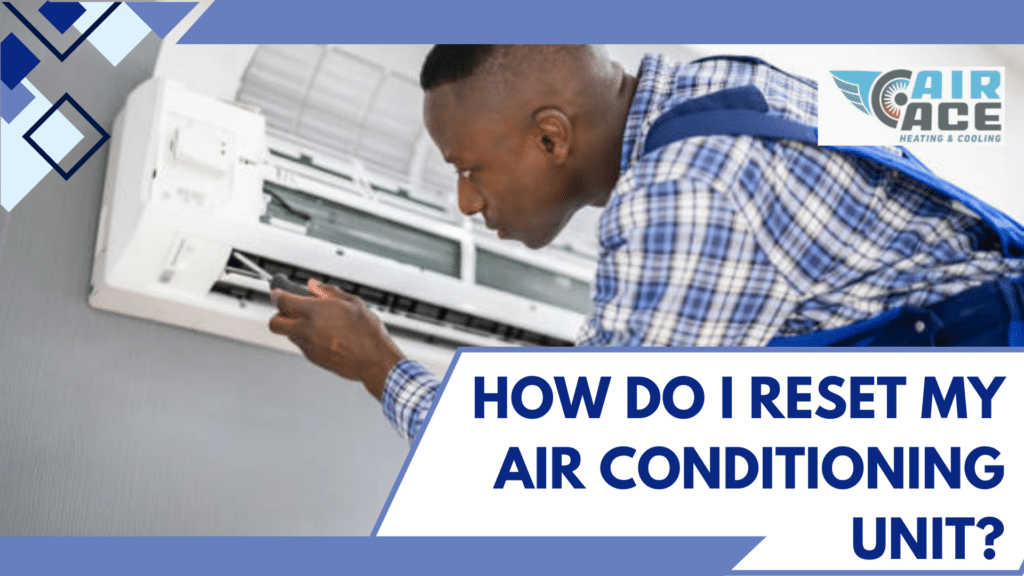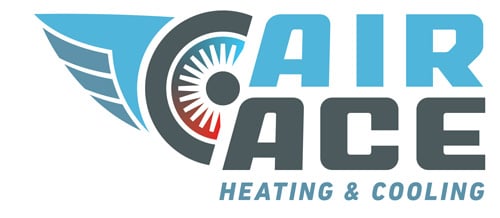How Do I Reset My Air Conditioning Unit?

Resetting Your AC Unit? What’s That?
Resetting your air conditioning unit is a troubleshooting step that can help resolve various issues with your AC system. Just like restarting a computer or a smartphone, resetting an AC unit involves turning it off and on again, allowing the system to refresh and possibly resolve minor glitches or malfunctions.
Why Would You Want to Reset Your AC Unit?
There are several reasons why you might consider resetting your air conditioning unit. Some common situations include:
System Malfunction: If your AC is not cooling or behaving erratically, a reset could resolve temporary software or hardware glitches.
Thermostat Issues: Sometimes, the thermostat may not communicate properly with the AC unit, and a reset can help reestablish the connection.
Power Outage Recovery: After a power outage, resetting your AC unit might be necessary to get it up and running again.
Error Codes or Alerts: Certain AC units display error codes or alerts, and a reset may clear these warnings after the underlying issue has been resolved.

What Happens When You Reset Your Air Conditioner?
When you perform a reset on your air conditioner, it typically involves turning off the unit, waiting for a short period (usually a minute or two), and then turning it back on. During this brief pause, the system stabilizes, and any temporary issues may be rectified. However, it’s important to note that resetting your AC is not a guaranteed fix for all problems, especially if there’s an underlying mechanical or electrical issue.
AC Reset Button Not Working?
In some modern air conditioning systems, you might find a dedicated “Reset” button. Pressing this button should initiate the reset process. However, if the button doesn’t respond or the reset doesn’t resolve the issue, it’s best to contact a professional HVAC technician. They have the expertise to diagnose and fix complex AC problems safely.
Resetting Air Conditioners With No Reset Button
For air conditioning units without a specific reset button, you can still reset them through other methods. One common approach is to turn off the power supply to the AC unit altogether. Here’s how:
Turning off the Air Conditioner through the thermostat interface.
Locate your thermostat and set it to the “Off” position or turn off the cooling mode. This will signal the AC unit to stop operating.
What to Do After a Power Outage:
After a power outage, the AC may not resume automatically. In such cases, wait for the power to stabilize and then turn on the AC using the thermostat.
When Should You Call an HVAC Technician?
While resetting your AC can resolve minor issues, some problems may require professional attention. Consider calling an HVAC technician in the following situations:
Frequent AC Breakdowns: If your AC unit keeps malfunctioning or requires repeated resets, there may be underlying issues that need a professional diagnosis.
Strange Noises or Smells: Unusual noises or foul odors emitting from the AC could indicate mechanical problems or mold growth, which should be addressed by a technician.
Leakage or Water Pooling: If you notice water pooling around the AC unit or any signs of leakage, it’s essential to have it inspected to prevent further damage.
Does Your Air Conditioning Unit Need TLC? AirACe Can Help!
Regular maintenance is key to keeping your AC unit running smoothly. Scheduling annual maintenance with a reputable HVAC service provider, like AirAce Heating and Cooling, can help avoid major issues and prolong the lifespan of your system. Maintenance tasks typically include cleaning, lubricating moving parts, checking refrigerant levels, and inspecting the electrical components.

Resetting The Breaker For The Air Conditioner In The Central Circuit Breaker Unit
In some cases, your AC unit may have tripped the circuit breaker, leading to a power interruption. To reset the breaker, follow these steps:
Turn on the thermostat and set it to “Cool” mode.
Set your thermostat to the “Cool” mode, which will signal the AC unit to turn on.
How Can Preventive Maintenance Help Avoid AC Issues?
Regular preventive maintenance can significantly reduce the chances of circuit breaker trips, as potential issues are addressed before they escalate.
Find the Reset Switch:
Locate the central circuit breaker unit in your home. Identify the switch labeled for the air conditioning unit.
Unplug the AC Power Switch:
Switch off the breaker for the AC unit by moving it to the “Off” position. Wait for a moment, and then switch it back to the “On” position.
Find the 240-Volt Circuit:
In some homes, air conditioners operate on a separate 240-volt circuit. If your AC unit has its dedicated circuit, ensure that the circuit breaker is also in the “On” position.

The Importance of Regular AC Maintenance
Regular maintenance is crucial for keeping your air conditioning unit in top condition. Neglecting maintenance can lead to reduced efficiency, increased energy consumption, and a higher risk of breakdowns. Here are some key benefits of scheduling routine AC maintenance:
Improved Energy Efficiency: During maintenance visits, HVAC technicians clean the condenser coils, check refrigerant levels, and ensure proper airflow. These steps help your AC run more efficiently, which can lead to lower energy bills.
Prolonged Lifespan: Just like any other mechanical system, an air conditioner that receives regular care is likely to have a longer lifespan. By addressing minor issues early on, you can prevent them from turning into major, expensive problems.
Enhanced Cooling Performance: A well-maintained AC unit cools your home more effectively. You’ll enjoy consistent comfort during hot summer months without worrying about sudden breakdowns.
Improved Indoor Air Quality: Air filters and coils can accumulate dust and debris over time, reducing indoor air quality. During maintenance, these components are cleaned or replaced, promoting cleaner and healthier air circulation.
Lower Repair Costs: Preventive maintenance helps catch and resolve potential issues before they escalate. This proactive approach can save you money on costly repairs that could have been prevented.
Manufacturer Warranty Compliance: Many AC manufacturers require regular maintenance to keep the warranty valid. Skipping maintenance visits could void your warranty, leaving you responsible for repair costs.
Environmentally Friendly: A well-maintained AC unit consumes less energy, reducing your carbon footprint and contributing to a greener environment.
DIY Maintenance Tips
While professional maintenance is essential, there are also some simple maintenance tasks you can perform yourself to keep your AC unit in good shape between service visits:
Regularly Clean or Replace Filters: Dirty filters can restrict airflow and reduce efficiency. Check your air filters monthly and clean or replace them as needed.
Keep the Area Around the AC Unit Clear: Ensure there is no debris, leaves, or other obstructions near the outdoor unit. Proper airflow is vital for efficient operation.
Inspect the Condensate Drain: The condensate drain can get clogged with algae and debris. Check it periodically and clear any blockages to prevent water damage.
Check Thermostat Settings: Ensure your thermostat is set to the correct temperature and cooling mode. Consider using a programmable thermostat for more efficient temperature control.

Tips for Safe and Effective AC Resetting
Resetting your air conditioning unit is a relatively simple process, but it’s essential to follow the right steps to avoid potential risks or damage. Here are some tips for safe and effective AC resetting:
Read the Manufacturer’s Instructions: Before attempting to reset your AC unit, consult the manufacturer’s manual or user guide. Different models may have specific resetting procedures or safety guidelines.
Turn Off the Power: Always start by turning off the power supply to the AC unit. You can do this by switching off the circuit breaker or shutting down the power at the thermostat.
Wait for a Few Minutes: After turning off the power, wait for a few minutes before turning it back on. This brief pause allows the system to stabilize and reset properly.
Avoid Frequent Resets: While resetting your AC occasionally is acceptable, avoid doing it frequently. Frequent resets may indicate an underlying issue that requires professional attention.
Check the Filters: Before and after resetting the AC, check and clean or replace the air filters as needed. Clogged filters can impact the cooling efficiency and airflow of your unit.
Inspect the Outdoor Unit: Take a moment to inspect the outdoor unit for any debris or vegetation buildup. Clear away leaves, grass, or any obstructions that might hinder proper airflow.
Ensure Proper Ventilation: Make sure that the AC unit has adequate space around it for proper ventilation. Good airflow is crucial for efficient operation.
Be Cautious With Circuit Breakers: If you need to reset the circuit breaker for the AC, exercise caution. If you’re unsure which breaker controls the unit, it’s better to call a professional.
Use the Thermostat Interface: For AC units without a reset button, use the thermostat interface to turn off the cooling mode, wait a moment, and then turn it back on.
Consider Professional Assistance: If you encounter persistent issues, strange noises, or any safety concerns, contact a licensed HVAC technician. Attempting complex repairs yourself could lead to further damage or safety hazards.
Troubleshooting Common AC Issues
While resetting can resolve minor problems, some AC issues may require additional troubleshooting:
Inadequate Cooling: Check for blocked vents, dirty filters, or improper thermostat settings. Also, ensure that the outdoor unit is not obstructed.
Unusual Noises: Squealing, rattling, or grinding sounds may indicate worn-out components or debris in the system. Have a technician inspect and repair the unit if needed.
Foul Odors: A musty smell could be due to mold growth inside the AC system. Cleaning or replacing filters and scheduling professional maintenance can help.
Water Leakage: Water pooling around the AC unit may suggest a clogged condensate drain or a refrigerant leak. These issues should be addressed by a professional.
Frozen Evaporator Coils: Restricted airflow or low refrigerant levels can cause the evaporator coils to freeze. Shut off the AC and let the ice thaw before calling a technician.
